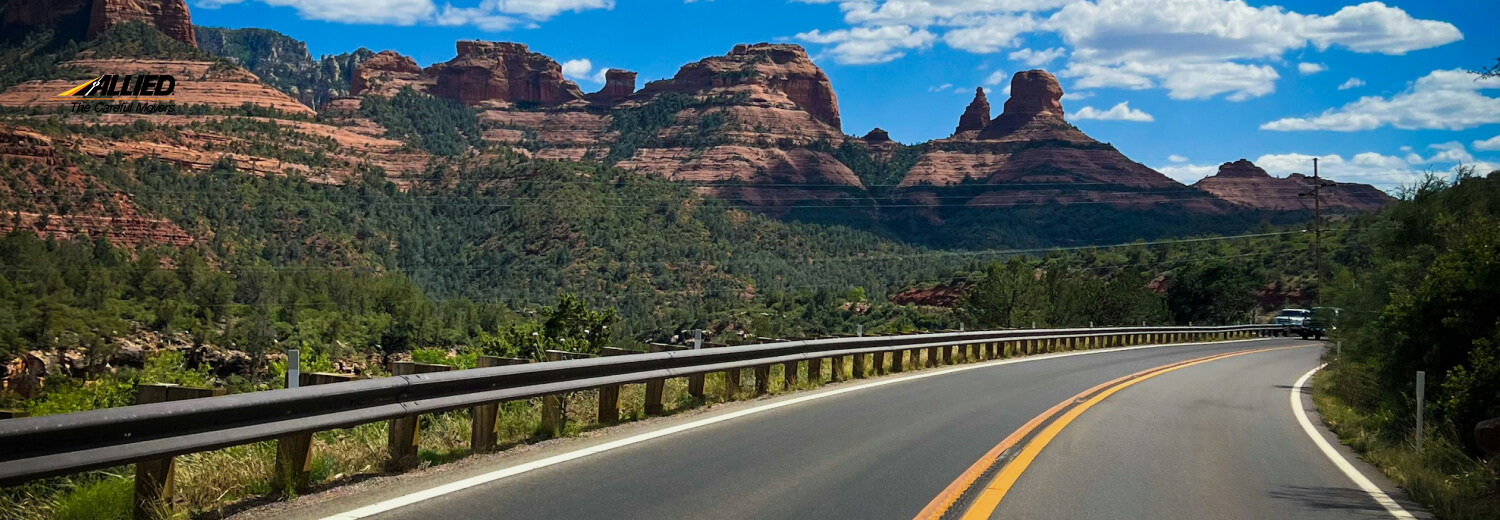When it comes to moving interstate, it’s easy to get caught up in planning for the before and after of the move, forgetting to plan for the actual journey. If you’re moving interstate, there are a number of ways to get yourself and your belongings from A to B. Along with following our tips for moving interstate, if you choose to turn your move into an adventure on the road, here are some of our top interstate driving tips for a safe journey.
Why Drive?
Whether you’re moving interstate for uni, relocating for work, or are just ready for a change, the costs of the moving process can add up. If you want to take your car with you, you have two options; fly and have your car transported through vehicle relocation services, or drive it yourself. If you’re keen to make the journey, then driving your car interstate can save the cost of flights for you and anyone else who’s coming along for the ride.
Preparation is key
As with any other part of your move, efficient planning and preparation is the key to success. Our interstate removalists in Australia are here to help with anything and everything, from professional moving services to offering our interstate driving tips.
Time it right
Where possible, plan your move over a period when you’ll have plenty of time to spare. This could be over the summer while you have time off for Christmas, or during school holidays when the move will be least disruptive for kids.
Remember to factor in realistic driving times. While the journey from Sydney to Perth, for example, comes in at around 41 hours, that only refers to the actual time spent on the road. This doesn’t include breaks and overnight stops, or delays due to road closures or reroutes.
Map it out
Interstate drives through Australia are likely to take you through some regional areas with limited phone service and data coverage. While going a few hours without checking social media might be a nice digital break, going a few hours without access to maps can be a big problem. To get around this, drivers relying on phones or Sat Nav to guide them should download the maps for their journey ahead of time. This is also a good opportunity to pinpoint service stations and rest stops along your intended route, as well as overnight accommodations for your road trip.
Packing list
You’ll likely have put together multiple drafts of packing lists by now, and it’s time to make one for your car, too. Whether the drive is set to take a few hours or a few days, having essential items stowed inside your car could save you in a pinch. This includes everything from a spare change of clothes, water, and power bank to a first-aid kit, jerry can with fuel, and high-vis vests in case you run into car trouble.
Expect the unexpected
No one plans for a road trip gone wrong, but sometimes things just happen. Luckily for you, if you follow our tips, you’ll be ready for almost anything.
The first step is to ensure your vehicle is in tip-top shape before setting off. Book in for a service with your local mechanic, and address any issues that may pop up. You never know when extra fuel or jumper cables will come in handy. You should also register for roadside assistance as a precaution- you never know when you might need it!
On the road
When you’ve planned to perfection, it’s time to buckle up and hit the road!
Sharing is caring
The maximum recommended time for any driver to spend behind the wheel is eight hours a day, but for less experienced long-haul drivers, this might still be too long. Sharing the drive with another passenger can help to speed things up if you’re not comfortable driving for long hours. You can also help to keep each other entertained with playlists, carpool karaoke, and whatever driving games you feel like - anyone fancy a game of ‘I spy’?
Break it up
Don’t forget to take plenty of breaks along the way, too. Drivers should aim to take a 15 minute break for every two hours of driving. Even if this is simply pulling off safely on the roadside, stretching your legs, and having some water, these frequent breaks will help to ensure you can stay focused.
Aussie outback
Another thing to be aware of while on the road is wildlife. Aussie animals are known to make frequent appearances on roads, so drivers need to stay vigilant to help protect the animals, themselves, and their car. Between dawn and dusk are many animals' favourite hours, so you might want to plan to drive predominantly or exclusively during daylight hours.
Law of the land
States have varying rules on biodiversity risks and restrictions, so bear this in mind if you’ll be crossing state lines. The Northern Territory, for example, doesn’t allow many plants, fruits, vegetables, seeds, or grains to be transported across the border. This is to prevent the interstate spread of some pests and diseases, so be sure to prepare for and respect these requirements, disposing of specified items in the relevant quarantine bins.
